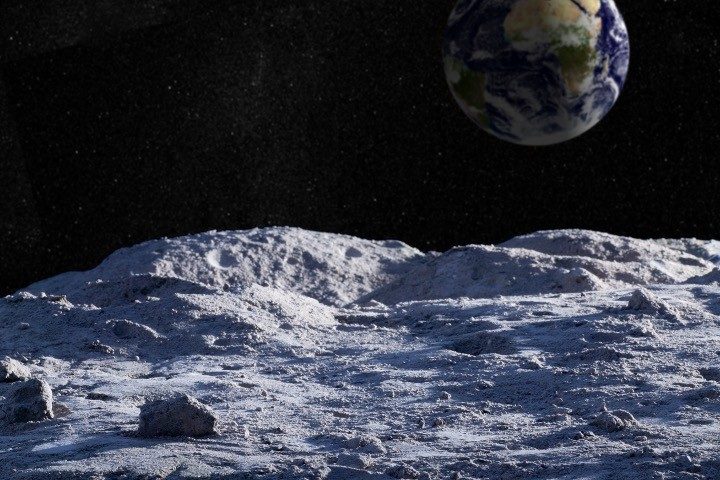
Claiming that “climate change is an existential threat,” a study released on February 8 by researchers from the University of Utah is suggesting that lunar dust could be used to filter sunlight in order to cool down the Earth. Climate hysterics believe that mankind’s emissions of carbon dioxide and other trace atmospheric gases is leading to out-of-control warming, which they believe will cause the planet to be essentially uninhabitable in coming decades.
The researchers don’t claim that their new technique of blocking sunlight alone can ease the threat of global warming, but insist that it must be used in conjunction with the elimination of fossil-fuel emissions as a means to “cool down” the supposedly warming Earth.
Never mind that just last week, Mount Washington in New Hampshire recorded an air temperature of minus 46 degrees Fahrenheit with a windchill of minus 100 degrees. “Earth has a fever,” so stop asking questions!
“Objects in space — a large screen or a swarm of small artificial satellites — that are well-positioned at the L1 Lagrange point between Earth and the Sun can efficiently shade our planet,” the study declares.
The research team, led by Benjamin C. Bromley, a physicist and astronomer at the University of Utah, believes that placing astronomical dust in an orbit between the sun and the Earth could mitigate the amount of sunlight that reaches Earth by one to two percent, which they feel would help cool the Earth.
“That was the seed of the idea; if we took a small amount of material and put it on a special orbit between the Earth and the sun and broke it up, we could block out a lot of sunlight with a little amount of mass,” Bromley said.
“It is amazing to contemplate how moon dust — which took over four billion years to generate — might help slow the rise in Earth’s temperature, a problem that took us less than 300 years to produce,” said Scott Kenyon of Harvard and the Smithsonian, a co-author of the study.
Bromley suggests his new idea as a backup plan should we on Earth need more time to get our collective act together and get off of the fossil fuels — which have helped us get millions out of poverty and expanded our world.
“We cannot as humanity let go of our primary goal of reducing greenhouse gas emissions here on our planet. That’s got to be the first job,” Bromley said. “Our idea is one — and it’s a very, very intensive one — to contribute to climate change mitigation, if we need more time here at home…. Nothing should distract us from reducing greenhouse gas emissions here on Earth.”
The proposal would involve launching the dust from the moon’s surface, which would mean that Earth-bound rockets would not be necessary.
“Once dust is released, its only impact is to shade Earth. It will not otherwise interact with our planet again,” Bromley and his team noted.
Even climate-alarmist scientists have dismissed the idea as a “distraction” from more Earth-based solutions to the alleged “climate crisis,” and feel it could ultimately lead to more problems than it might solve.
“While it is certainly true that reducing sunlight can cause cooling, it acts on a very different part of the climate system than carbon dioxide,” said the creator of Al Gore’s “hockey stick” graph, Michael Mann.
“Efforts to offset carbon dioxide-caused warming with sunlight reduction would yield a very different climate, perhaps one unlike any seen before in Earth’s history, with massive shifts in atmospheric circulation and rainfall patterns and possible worsening of droughts,” Mann said.
The study’s authors estimate that the amount of moon dust which would need to be harvested and released into Earth’s orbit would be on the order of 10 billion kilograms (just over 22 billion lbs.) This is approximately 100 times more mass than mankind, to this point, has ever released into space.
It’s hardly the first time that scientists have speculated on the possibility that climate change could be attacked by risky geoengineering (or is this lunar engineering?) projects. In 2021, it was reported that the United Nations was considering releasing reflective aerosol sulfate material into the atmosphere, which they hoped would mimic the way that ash clouds cool the planet after a large volcanic eruption.
It’s unlikely that the world as currently structured would ever agree to such a bizarre and outlandish strategy as a means of “saving the planet.” Since such a plan would be something that, literally, affects all of us, some type of global agreement would need to be reached in order to launch such a mission.
It would be yet another excuse to create a one-world government, where decisions on such actions could be made quickly.




